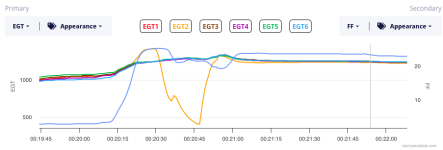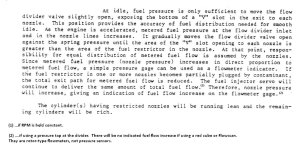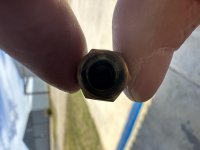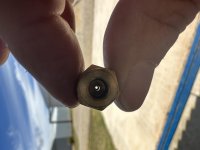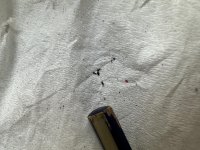Fuel system is Bendix RSA 5 servo with Bendix fuel divider. Complete system is 6 years old from complete overhaul by Airflow Performance and about 550 flight hours. I have done the fuel flow distribution check, and all 6 fuel samples were exactly the same. I mainly fly LOP during cruise and suspect that any further decrease in fuel flow to a cylinder will manifest itself with rough running.
It has now happened twice that I likely had an injector partially blocked. First one No 5 on startup (shut down and changed injector to same size) and second No 2 on take-off recently (Few seconds duration then recovered itself). No indication of a magneto issue. Engine data appears consistent with impaired fuel flow to those cylinders. The two events occurred about 30 hours apart with no indication that there were such episodes during those 30 hours. Injectors are from Airflow Performance with sizes 0.0245-0.0255". After the first episode I ultrasonically cleaned all the injectors, even though I could not see any abnormalities.
Mechanical fuel pump functions normally with no discharge from the drain tube.
The main fuel filter in the tunnel (74 micron which is 0.0029 inch)) was clean 6 months ago. I have never had dirt or water in strainer during preflight fuel sampling, nor visible dirt in the main fuel filter during CI. I will check the filter again.
Assuming that the dirt did not get past the main fuel filter in the tunnel, where can dirt come from downstream from the main filter? (Mechanical fuel pump, Fuel servo (RSA 5), Fuel divider??)
Where downstream are filters/strainers located that I might inspect for dirt accumulation? (I think there is one on fuel inlet to servo, and maybe one at inlet to fuel divider??).
Anything else I should do or check?
Appreciate your help.
Thank you
Johan
It has now happened twice that I likely had an injector partially blocked. First one No 5 on startup (shut down and changed injector to same size) and second No 2 on take-off recently (Few seconds duration then recovered itself). No indication of a magneto issue. Engine data appears consistent with impaired fuel flow to those cylinders. The two events occurred about 30 hours apart with no indication that there were such episodes during those 30 hours. Injectors are from Airflow Performance with sizes 0.0245-0.0255". After the first episode I ultrasonically cleaned all the injectors, even though I could not see any abnormalities.
Mechanical fuel pump functions normally with no discharge from the drain tube.
The main fuel filter in the tunnel (74 micron which is 0.0029 inch)) was clean 6 months ago. I have never had dirt or water in strainer during preflight fuel sampling, nor visible dirt in the main fuel filter during CI. I will check the filter again.
Assuming that the dirt did not get past the main fuel filter in the tunnel, where can dirt come from downstream from the main filter? (Mechanical fuel pump, Fuel servo (RSA 5), Fuel divider??)
Where downstream are filters/strainers located that I might inspect for dirt accumulation? (I think there is one on fuel inlet to servo, and maybe one at inlet to fuel divider??).
Anything else I should do or check?
Appreciate your help.
Thank you
Johan



